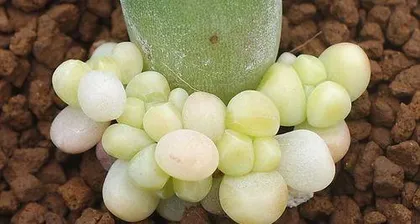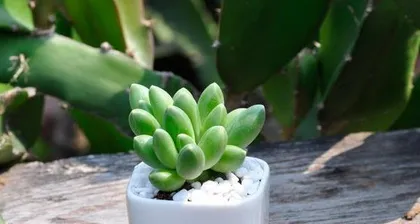Chiyoda-no-matsu is a very important symbol in Japanese culture. The old stumps of this tree are also often a favorite among gardening enthusiasts. However, when caring for this tree, one must be cautious to ensure it receives proper care and protection.

One: Understanding the Concept of Chiyoda-no-matsu Old Stumps
Chiyoda-no-matsu refers to a dead Japanese pine tree, but it is still cherished by people due to its unique and beautiful shape. Caring for Chiyoda-no-matsu old stumps has also become a direction for gardening enthusiasts to continuously explore.
Two: What are the Characteristics of Chiyoda-no-matsu Old Stumps
Chiyoda-no-matsu old stumps have unique morphological characteristics, such as irregular geometric shapes and complex textures. At the same time, they possess a certain historical value and have become an important component of landscape art.

Three: Why Maintain Chiyoda-no-matsu Old Stumps
The reason for maintaining Chiyoda-no-matsu old stumps is to inherit their historical and cultural value, and at the same time, to seek a sustainable ecological protection method to ensure the survival and reproduction of this species.
Four: The Necessity of Maintaining Chiyoda-no-matsu Old Stumps
In the context of protecting the natural ecology, the maintenance of Chiyoda-no-matsu old stumps is receiving increasing attention. The necessity of this maintenance lies in its ability to reduce environmental pollution, promote ecological balance, and thus achieve harmonious coexistence between humans and nature.
Five: Sunlight Requirements for Chiyoda-no-matsu Old Stumps
Chiyoda-no-matsu old stumps are sun-loving plants and require sufficient sunlight for normal growth and development. During cultivation and management, it is important to take appropriate measures to ensure they receive adequate sunlight.

Six: Soil Requirements for Chiyoda-no-matsu Old Stumps
Chiyoda-no-matsu old stumps also have specific soil requirements. It is best to use acidic, loose, fertile, and well-draining soil. At the same time, soil fertility should be controlled to avoid root damage from excessive fertilization.
Seven: Watering Requirements for Chiyoda-no-matsu Old Stumps
Watering for Chiyoda-no-matsu old stumps also needs to be controlled. One should avoid prolonged drought or overwatering. It is recommended to manage the amount, frequency, and timing of watering reasonably.
Eight: How to Prune Chiyoda-no-matsu Old Stumps
Pruning Chiyoda-no-matsu old stumps is a necessary maintenance measure that can promote branching and growth, while also beautifying its appearance and better showcasing its value. However, care must be taken to prune appropriately to avoid affecting its growth.
Nine: How to Fertilize Chiyoda-no-matsu Old Stumps
Fertilizing Chiyoda-no-matsu old stumps is crucial for their normal growth. Attention should be paid to fertilizer selection and application timing. It is generally recommended to use organic fertilizers and apply them appropriately, for instance, before and after the flowering period and during the peak growth season.
Ten: How to Prevent Pests and Diseases in Chiyoda-no-matsu Old Stumps
Chiyoda-no-matsu old stumps are also susceptible to pests and diseases, such as wilt disease, brown stripe rust, and aphids. To prevent the occurrence and damage of these issues, it is necessary to adopt reasonable preventive and control measures and to enhance management and protection.
Eleven: How to Enhance the Protection of Chiyoda-no-matsu Old Stumps
Protecting Chiyoda-no-matsu old stumps also requires specific measures, including strengthening supervision, preventing damage, and conducting regular inspections. Only through comprehensive and scientific protection can the inheritance of their ecological and cultural value be better achieved.
Twelve: How to Increase the Ornamental Value of Chiyoda-no-matsu Old Stumps
Chiyoda-no-matsu old stumps have unique ornamental value in landscape design. Their beauty and value can be better highlighted through thoughtful layout and pairing. Additionally, different maintenance methods can be used to enhance their ornamental value and the overall experience.
Thirteen: How to Use Chiyoda-no-matsu Old Stumps for Ecological Protection
Chiyoda-no-matsu old stumps also play a role in ecological protection. Through their unique characteristics and aesthetic value, they can inspire practices and ideas in conservation. Furthermore, their utilization value can be enhanced to promote the development of an ecological economy.
Fourteen: How to Make Chiyoda-no-matsu Old Stumps a Representative of Cultural Heritage
Chiyoda-no-matsu old stumps possess not only ecological, ornamental, and protective value but are also an important part of Japanese cultural heritage. To better showcase their cultural significance, it is essential to enhance research and preservation, allowing them to become a representative and symbol of this heritage.
Fifteen: The Importance of Maintaining Chiyoda-no-matsu Old Stumps
The maintenance of Chiyoda-no-matsu old stumps is a crucial task in the art of landscape design and a key direction for ecological conservation and cultural heritage. Only by strengthening their care and protection can their full value and significance be realized, better serving the sustainable development of human society.